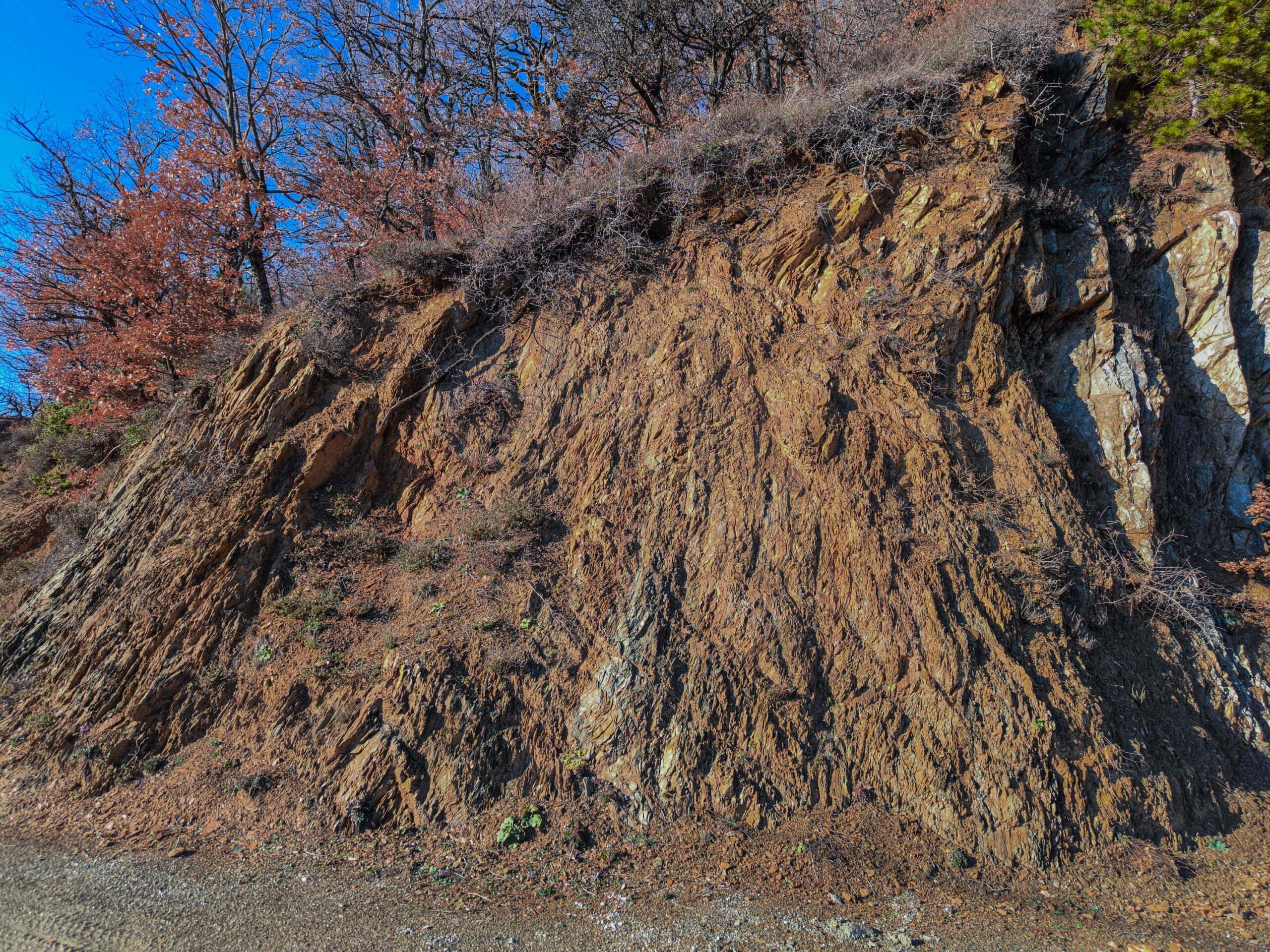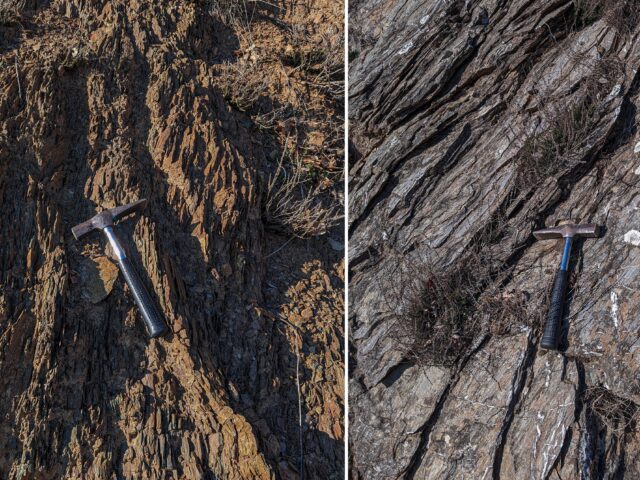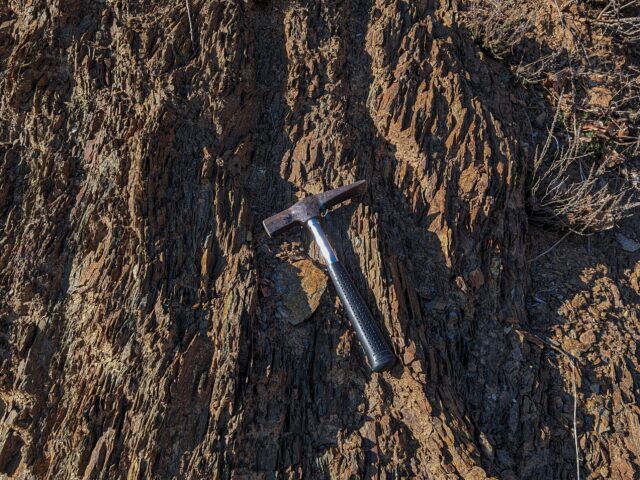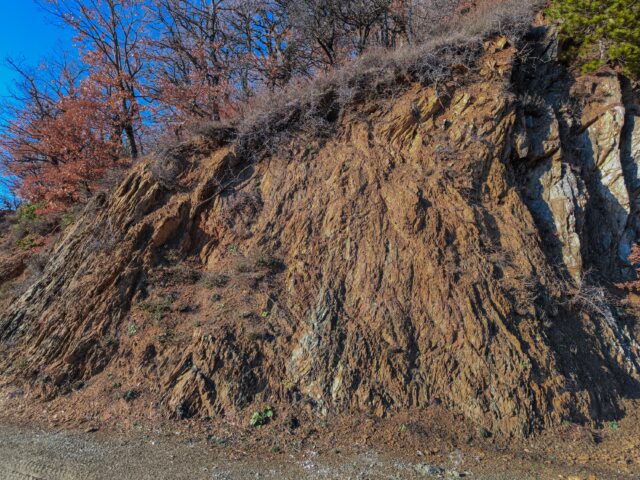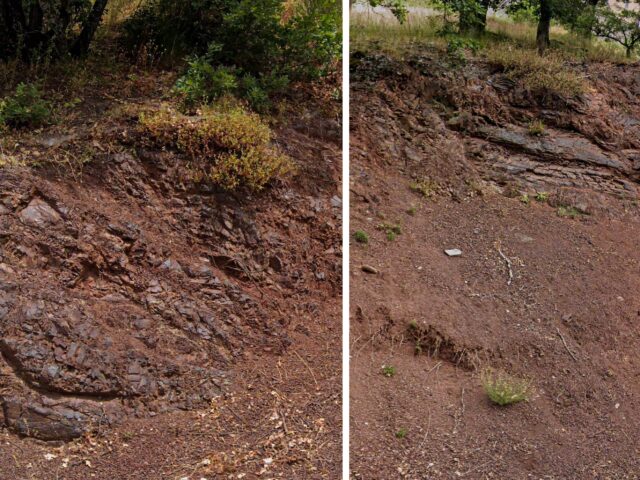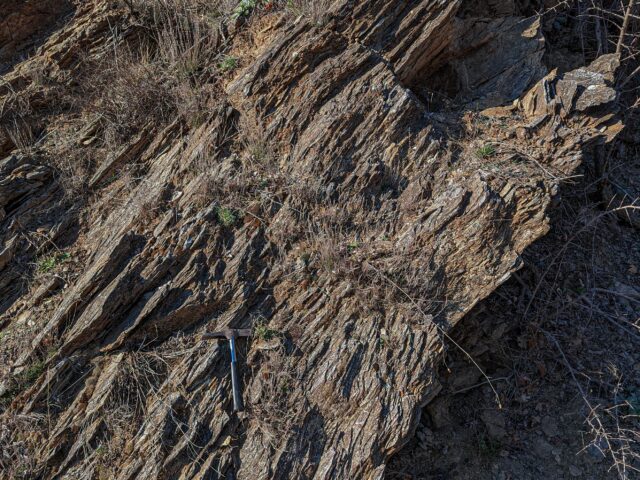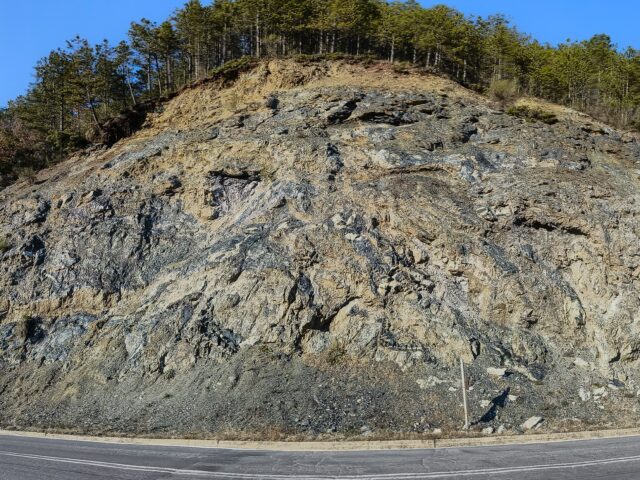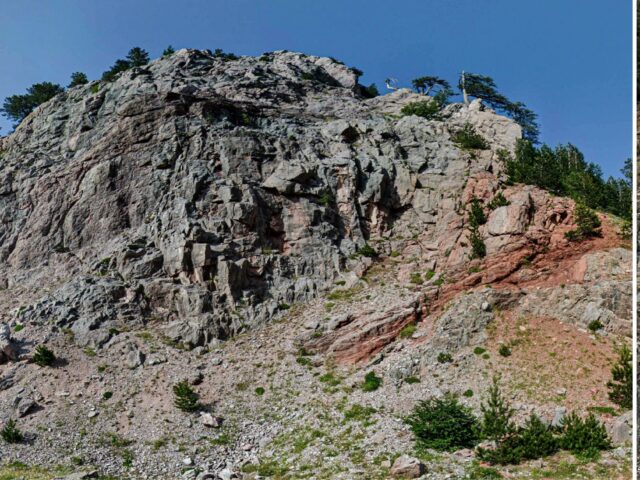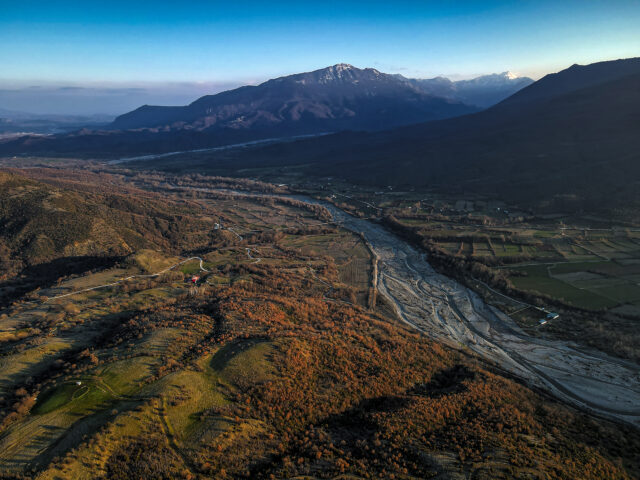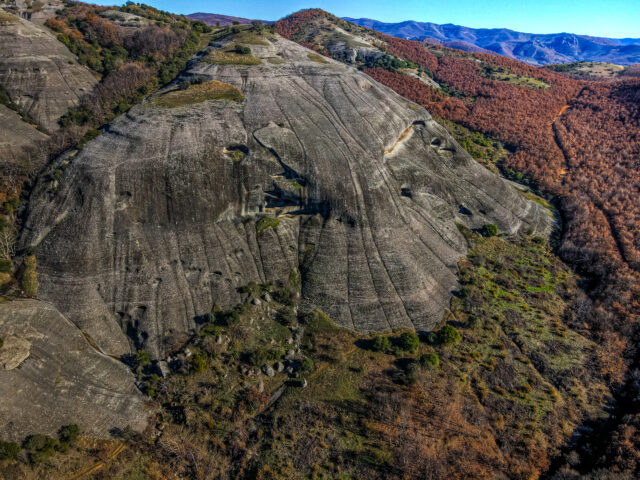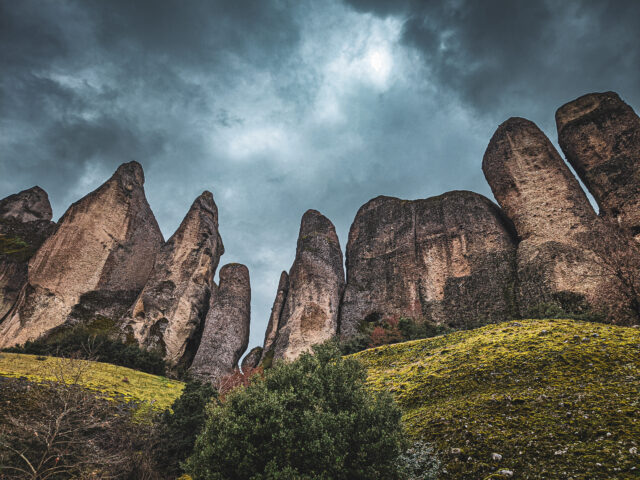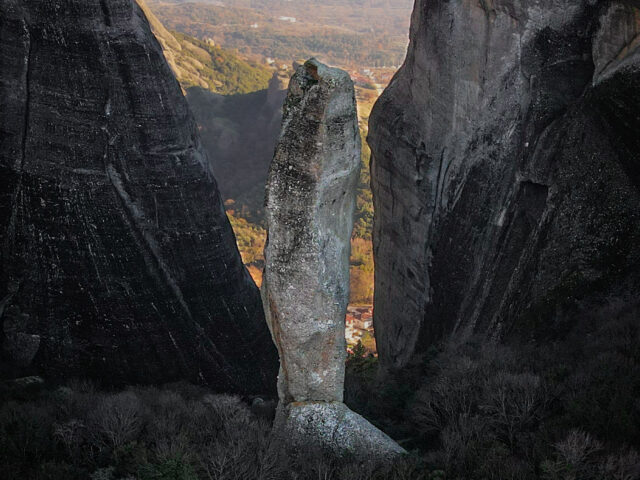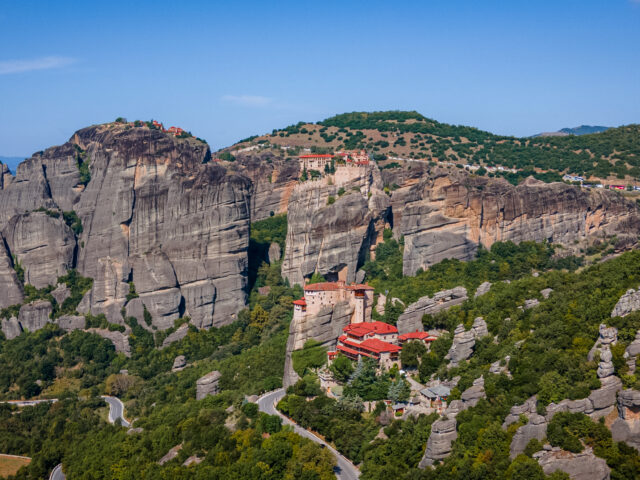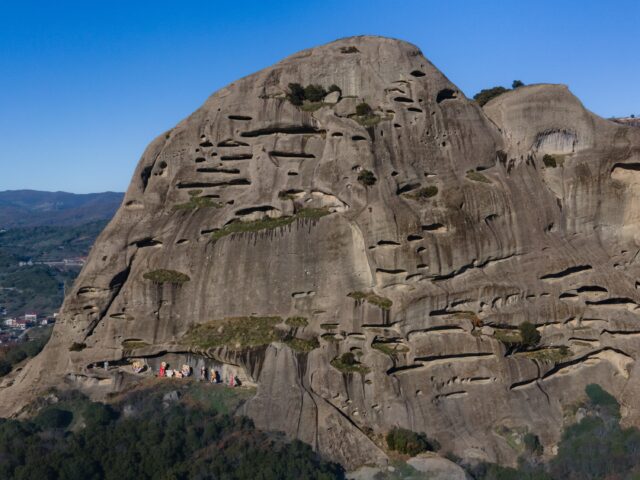07.Malakasi Deep Oceanic Sediments
Address
Malakasi 422 00
GPS
39.786081972886, 21.285568013553
At the western end of Malakasiotis valley we meet the mountain village of Malakasi, shortly before the Kalambaka-Ioannina road exit to the Egnatia highway. Multicolored sedimentary rocks of oceanic origin appear along the main roads in the Malakasi area. We can observe these sediments by following the roads towards the entrance of the village after Panagia, within the village, to the south towards the cemetery and to the north at the exit of the local road to Anilio. Large occurrences of these sediments can also be observed along the Egnatia Highway at the height of Malakasio, with limited access up. These are fine-grained sediments of clayey and siliceous composition, such as clayey shales of various colors and mainly red, pelites, radiolarites of different colors, interspersed with thin layers of pelagic limestones and sometimes fine-grained sandstones, while they are interrupted by basic volcanic rocks and tuffs. These sediments constitute a very thick series, are strongly deformed due to tectonics and are often folded together with ophiolite bodies. These formations were created by deposition on the ocean floor of Tethys, which separated Eurasia from Africa during the Mesozoic period and was destroyed by the collision of the two large plates of the lithosphere. Their current position is the result of the compressive forces that caused the emergence and folding of the sediments of the ocean floor.
The oceanic sediments encountered at Malakasi are mapped as a series of distinct units, part of the Pindos Ophiolite Complex. These units (Avdella, Aspropotamos, Dramala) are emplaced as tectonic plates on the Pindos flysch. The Avdella unit (Avdella mélange) consists of a mixture (mélange) of various volcanic, sedimentary rocks as well as blocks of surrounding formations. This mixture was created as a result of tectonic deformation and mild metamorphism at the base of the Ophiolite Complex.

